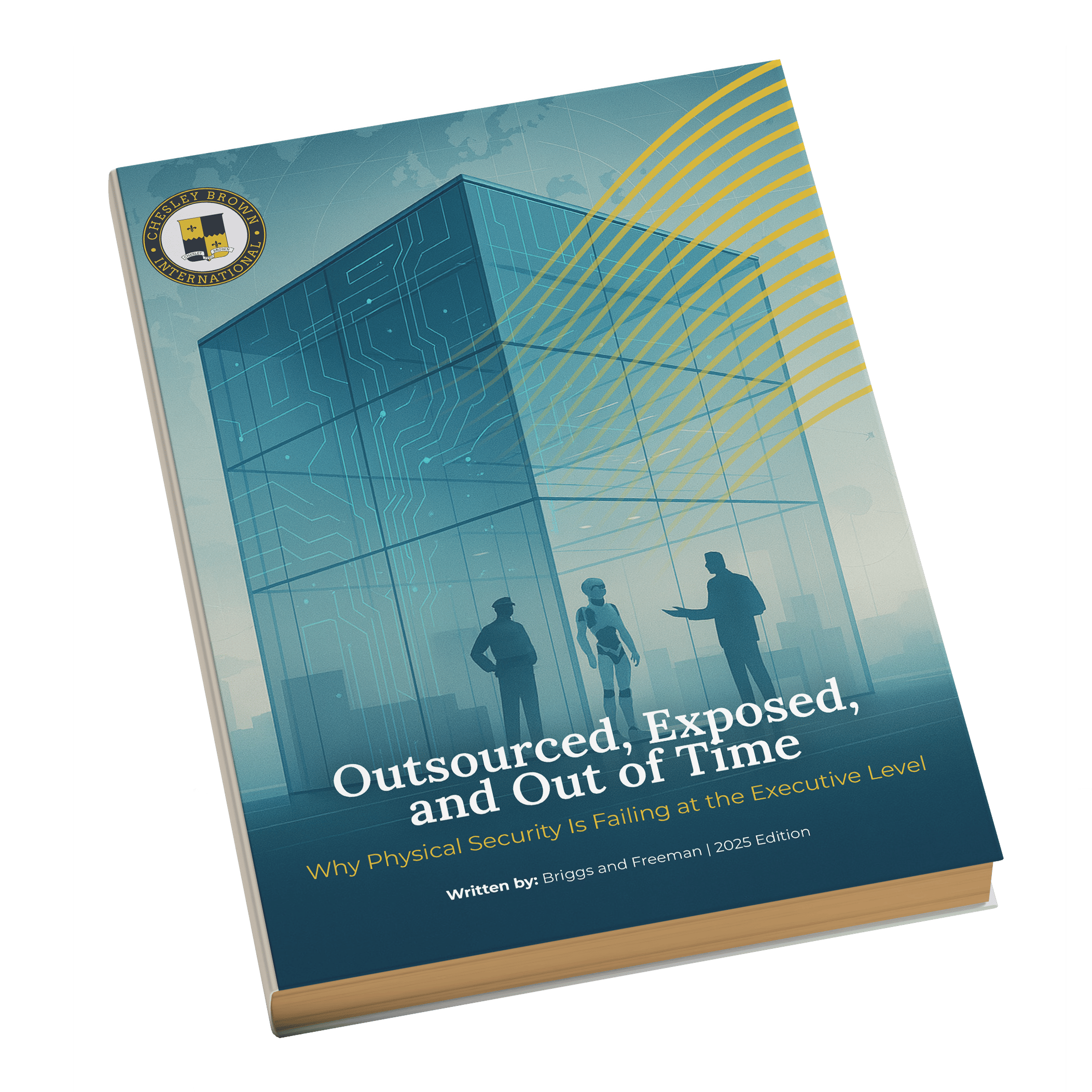Written by: James Hart
Your team’s culture could be its best defense against threats to its safety and security.
When organizations experience a fire, a product recall or other incidents, they often spend time reviewing what happened. They work to understand the causes so their team can prevent future occurrences.
Often, the fault doesn’t belong to one person’s bad choice or a single piece of equipment breaking. Instead, the culture of that organization played a significant role. It didn’t prioritize safety through the policies and standards that its team followed. That made a breakdown almost inevitable.
To improve their risk profile, more organizations are embracing the idea of safety culture. They adopt programs and encourage behaviors that reduce the possibility of accidents, system failures and losses. Safety becomes everyone’s responsibility.
“Having a safety culture means that basically everyone at the company — the whole staff, the leaders, the directors, the officers — we all work together to create a safe workplace environment,” said Kathina Williams, human resources manager for Chesley Brown International, the security consulting and management firm.
“Everybody is involved, and working together, you can help reduce the risk of accidents and other incidents.”
Creating a workplace safety culture takes time and investment, but it’s possible to make your organization more resilient when the worst happens. Here are some strategies that Chesley Brown uses and recommends to help clients upgrade their approach to safety and risk management.
The elements of a thriving workplace safety culture
There isn’t one universal definition of safety culture, but this description from the Federal Highway Administration is a good start. Safety culture is “the shared values, actions and behaviors that demonstrate a commitment to safety over competing goals and demands.”
Building an enduring safety culture takes more than a single workshop or company memo. Like any type of organizational change, safety culture involves multiple forces working together to reduce risks and encourage better behavior. Here are some of the essential elements for nurturing a safety-first organization.
Engagement from leadership
While safety culture should encompass everyone in a company, school, government agency or other body, it ultimately starts with leadership. The company’s owners and management must emphasize safety more if they want the rest of their teams to do so. They help hold the entire organization accountable.
In action, that means setting aside resources for safety training and equipment, both in terms of time and money. It could mean accepting tradeoffs in other areas of operation — for example, refusing to sacrifice safety for higher but unsafer production levels.
Effective policies and behaviors
You won’t get where you’re going without a road map. Organizations with high-performing safety cultures have policies and guidelines to guide how team members handle both everyday situations and emergencies. Those rules ultimately shape what people do day in and day out.
“Knowing how to effectively handle those things is important for maintaining safety for tenants, clients, the company and the actual employee on the scene,” Williams said.
Practically, that could mean checklists and routines for daily activities like closing up for the day or patrolling the property. It could also cover the creation of emergency procedures for dangerous storms, fires and other low-frequency, high-risk events.
Larger organizations or facilities might tailor their rules for specific sites or areas.
“It’s very important that employees learn the ins and outs of their site,” William said, “so that they can understand what is applicable to that site in terms of risk or hazardous situations.”
Training and retraining
Most organizations train their new employees or members on safety rules during onboarding. Effective safety culture goes further, though, and consistently retrains people on that information.
Some organizations hold monthly and quarterly training to develop additional skills, too. For example, learning how to de-escalate conflicts can prevent physical confrontations and even improve an organization’s customer service.
Williams strongly recommends that organizations regularly hold drills to reinforce what team members learn in training. Annual drills help refresh those skills and make employees more comfortable executing pre-written safety plans.
“Classroom training is great,” Williams said. “It’s very knowledge-based. But sometimes, when you’re in the moment, you can freeze up.”
Holding drills gets everyone used to using that knowledge. That way, everyone is ready to respond to an emergency, whether the threat is something as mundane as a broken water pipe or as dangerous as an active shooter.
Staffing and rest
Some businesses overlook an important element of safety culture: making sure their security team and other staffers are receiving proper rest. They need to ensure employees take scheduled breaks and aren’t being over-scheduled.
“It might sound like a small thing, but without proper rest, you won’t always react and respond normally,” Williams said. “You’re not as logical. You may be more forgetful. If you’re not in the best shape, you may not perform your best.”
Equipment and maintenance
A company’s equipment and facilities are also an element of safety culture. That includes gear directly related to security, like security cameras and alarms.
“Make sure security officers have the proper equipment in good working order,” Williams said. “If they’re in the field, No. 1, their cellphones and radios should be fully charged and working.”
Upkeep is important because, when an emergency arises, team members need the ability to respond as quickly as possible. If they have to stop and deal with nonworking gear, it may prevent them from taking action, with potentially disastrous consequences.
“Sometimes you really are dealing with a life-threatening case,” Williams said. “You want to make sure that you’re not having to stop and deal with gear that isn’t working.”
But safety culture also covers other equipment, whether that’s a grill in a restaurant or a mechanical press in a manufacturing plant.
A commitment to safety will promote improvements to the physical plant, too. Specific steps might be marking fire exits, setting up emergency shelters or preventing slip-and-fall risks.
The freedom to speak up
Google researchers looked at the characteristics of high-performing teams and found those groups shared a common trait: psychological safety. Team members trust that they can ask questions, admit to mistakes and generally speak honestly without being harshly penalized.
And this mindset is extremely important for a flourishing safety culture. All team members should be encouraged to point out problems so the organization can address any weaknesses.
A commitment to learning and improvement
Even organizations that stress safety will experience disasters and mistakes, though their hard work and preparation should help shield them from the worst outcomes.
What sets these organizations apart is their willingness to learn from those situations. They conduct reviews to document what happened and why. They constantly take those lessons and refine their policies and training to make them even more effective.
The benefits of safety culture
First and foremost, safety culture is the right thing to do because it helps protect people from injury or even death. However, organizations can gain other considerable advantages by paying more attention to safety.
- Customers are more likely to do business with organizations that demonstrate high standards around safety. Workers will be more eager to apply for open positions with those companies and are less likely to leave after they’ve been hired. “Nobody wants to be associated with a company that doesn’t have a safety culture,” Williams said.
- While implementing a safety culture can carry a financial expense, the potential losses from a disaster or accident would cost more.
- Organizations with strong safety cultures are often more productive. There is less downtime due to accidents, and their workforce tends to have higher morale.
Building a stronger, healthier team with safety culture
The concept of safety culture grew out of the Chernobyl nuclear catastrophe. In its after-action reports, the International Nuclear Safety Advisory Group cited the plant’s culture as a major cause of the disaster.
That tragedy has inspired businesses, governments and other groups around the world to take culture, training and prevention more seriously. By adopting the lessons learned from these and other situations, forward-thinking leaders can avoid similar problems in their organizations.
As your team works to level up its safety culture, it can help to have experts on your side. Chesley Brown International provides clients across North America with proven expertise in security consulting and management. Whatever your team’s goals or needs, the firm can deliver exceptional service and solutions.
To learn how the firm can benefit your team, contact Chesley Brown today to request a consultation.
Sign up!
For industry-leading guides and analysis sign up for our blog below.
Latest News
Community Policing Strategies: Building Trust and Safety
Written by: James Hart It’s always important to remember: Private security officers aren’t police, and police aren’t security officers. The two roles are both important, but they have fundamental differences. “Security officers can’t be everywhere,…
Securing Infrastructure: How to Prepare for Disruptions to Critical Services and Systems in Your Business
Written by: James Hart Infrastructure is one of the great blessings of the modern age. Flip a switch, turn on a faucet, launch a browser window, and you can generally assume the giant invisible systems…
Security Challenges in Shopping Centers — and How to Overcome Them
Written by: James Hart Overcoming the Biggest Security Challenges in Shopping Centers The retail business has never been for the faint of heart. In recent years, however, security problems have made it even more challenging…
Securing Office Buildings: Best Practices for Property Managers Seeking a Safer, More Secure Environment
Written by: James Hart As competition for tenants remains high, property managers must not overlook the importance of effectively securing their office buildings, according to experts from Chesley Brown International, the security consulting and risk…
Introducing Ray Strobel: Director of the Waterfront
We’re thrilled to announce the promotion of Ray Strobel to the role of Public Safety Director at the Waterfront in Pittsburgh’s Steel Valley! Ray brings with him a wealth of experience and a unique perspective from his extensive background in law enforcement and service to our country. We sat down with Ray for a fun interview to get to know him better and learn about his journey with Chesley Brown and beyond.







